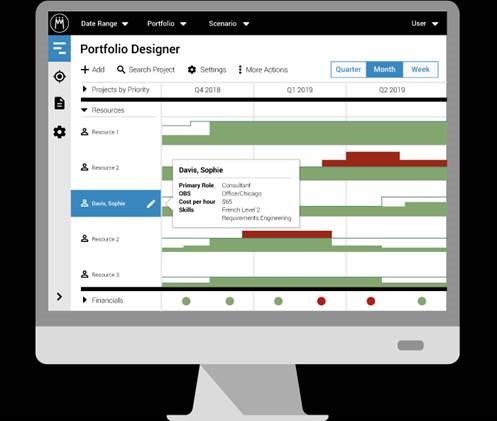So, why, when we come to evaluate a portfolio (or several portfolios) of work, is it believed necessary to have one corporate set of criteria, against which everything will be considered?
Projects have different benefits, which are not always easy to measure quantitatively – some for marketing, some for finance, some for HR, some for IT etc. Risk reduction, PR enhancement, brand awareness, litigation avoidance – the list is extensive. Yes, you’re correct, these can probably be reduced to financial measures and quite rightly. If you can’t objectively measure the benefit of an initiative, then should you be doing it? Really? Honestly…?
However, forcing all your departments, business units, service groups etc. to financially evaluate all of their proposed activity, against one colossal set of criteria, is probably going to lead to delay, avoidance and demotivation. So, why not let your groups prioritise their proposed of work within their own portfolio, against their own set of criteria?
Only when they’ve done that (scoring, arguing, doing what-ifs etc.), do they take their choices into the ‘corporate portfolio’. Think of it as the group phase of the World Cup, before getting to the knockout stage.
This has a few advantages.
- People stop trying to assign speculative financial values to proposed projects based on very dodgy arguments, just to get them through the first round of negotiation.
- Comparing apples with apples within an apple-based portfolio enables managers to decide their priorities on comparable arguments, using terminology, criteria and arguments that they understand and can support.
- It avoids the 400lb gorilla tactic. Yes, there will be some huge corporate imperatives that will always be chosen, but if the marketing portfolio is critical to the business goals (and has been allocated some budget), if it ensures that the key marketing projects happen and are not kicked into the long grass by the ‘must do the IT infrastructure update’ gorilla.
- Senior managers become truly accountable for their own portfolios of work. If they’ve argued for them, acquired the appropriate budget, motivated their teams and understand understood their alignment with corporate goals, then they’re more likely to be the champion for the portfolio.
This approach will result in separate portfolios of work, each prioritised with appropriate criteria. If there are five portfolios of work, there will be five #1, five #2, five #3 etc. This is fine – we bring the top priorities from each into our master portfolio for ‘what-if’ scenario planning. It means we can consider apples vs chalk vs Beyoncé.
Each is important within its own universe – now we can look at them across the organisation, to plan, schedule, allocate appropriate resources and come up with some feasible alternatives for the organisation to consider.
The question for you, is whether you can do that within your current planning tool? Is it collaborative or siloed? Does it take hours or weeks…?
Try Meisterplan – you’ll find it a joy to use and you can go home early. Listen to some Beyoncé, if you like.
Improved Visibility : Faster Decisions : Better Outcomes.
Agree? Disagree? Think I’m talking drivel or that I should be emperor? Then let me know, otherwise I’m shouting in the thunderstorm – [email protected]


